

Aswathy K is a versatile writer with over 12 years of experience in journalism, internal communications, and content .
Updated on: December 21, 2023 · 8 min read

Electronic signatures bring a sense of legitimacy to online documents. But, if you've ever been tasked with signing a document electronically, you know that sometimes the options can be overwhelming. From using a mouse to a stylus and even a finger, there are multiple ways to create an electronic signature.
In this article, let's explore the different ways to electronically sign a document with LegalZoom eSignature service.
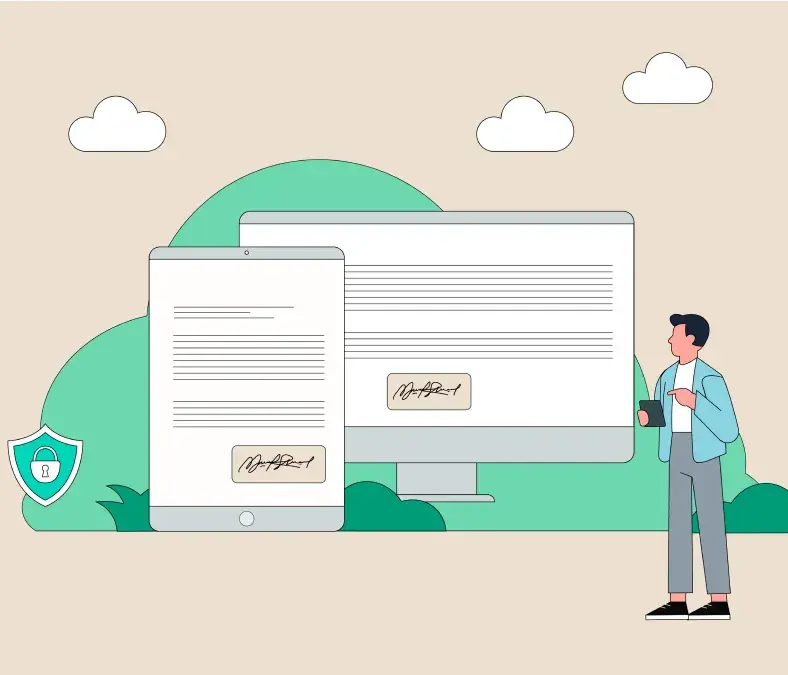
An electronic signature is a digital representation of a person's signature. It's an alternative to handwritten signatures in electronic documents. Electronic signatures can take different forms, including typing your name, drawing your signature with a mouse or stylus, and scanning your handwritten signature. It can be used in a wide range of industries and contexts, including to sign contracts, agreements, invoices, and offer letters.
Following are some of the key benefits of e-signatures:
Electronic signatures eliminate the time-consuming back-and-forth of printing, signing, and scanning documents.
With electronic signatures, you can close deals swiftly, reducing delays and improving efficiency.
Save valuable time by electronically signing documents from anywhere, on any device, without printing or mailing.
Electronic signatures enable seamless collaboration with colleagues and clients, allowing for real-time document sharing and signing.
Digitally signed documents simplify record-keeping and reduce paperwork because they are easily searchable, retrievable, and stored securely.
There are different ways to create an electronic signature. Here are some common methods:
One of the simplest methods is to type your name or initials as your signature in the document that needs e-signature.
For touchscreen devices, such as smartphones or tablets, you can use your finger or stylus to create a signature directly on the screen. This method mimics the experience of signing with a pen on paper. If you've got a desktop computer, you can use your mouse to draw your signature.
Another option is to scan or take a photo of your handwritten signature and upload it as a .jpeg or .png image. This image can then be inserted into the document where the signature is required.
There are various online signature generator platforms available that allow you to create and store your electronic signature. These platforms often provide tools for drawing or uploading an image of your signature and allow you to add it easily to digital documents. Such applications often come with features such as customizable signature templates that allow you to change the size, color, and style of your signature.
Regardless of the method you choose to create an electronic signature, it's crucial to understand that the acceptance and legality of electronic signatures can vary depending on the jurisdiction. It's highly recommended to seek advice from legal professionals or ensure that your electronic signature complies with the relevant regulations required for signing your document.
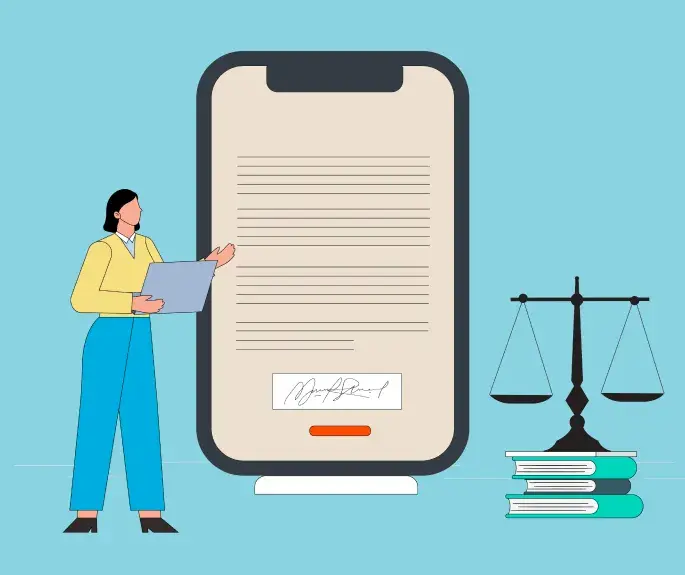
Electronic signatures are legally binding and enforceable in many countries around the world. In the United States, for example, the Electronic Signatures in Global and National Commerce Act (ESIGN) and the Uniform Electronic Transactions Act (UETA) provide legal frameworks for the use of electronic signatures.
The ESIGN Act is a federal law enacted in 2000 to promote electronic commerce and trust in electronic transactions. The act creates a general presumption (subject to a few exceptions) that electronically signed documents have the same legal validity as hand-signed documents. The UETA is enacted on a state-by-state basis and functions similarly to the federal ESIGN Act.
Other countries also have enacted laws or regulations that recognize electronic signatures. For instance, the European Union (EU) has its Electronic Identification and Trust Services Regulation (eIDAS Regulation). It provides a legal framework for electronic signatures and other electronic identification methods across all member states. In Canada, the Personal Information Protection and Electronic Documents Act (PIPEDA) regulates the use of electronic signatures in certain types of transactions.
Overall, the legal landscape surrounding electronic signatures continues to evolve as more countries and jurisdictions adopt electronic signature laws and regulations. Individuals and organizations need to stay up-to-date with these developments to ensure that their use of electronic signatures remains legally compliant.
Whether you want to self-sign and/or want signatures from the external signer(s) on documents, the LegalZoom eSignature service provides the flexibility to sign documents in your unique style.
In this method, you have the flexibility to personalize your signature by typing your name exactly as you want it to appear. For instance, if your name is Janet Jacob, you can choose to type it as is or customize it according to your preference, such as Janet, J. Jacob, Janet. J, Janet, and more. Additionally, you can enhance the look of your signature by selecting from a range of six pre-formatted text styles that suit your needs and aesthetic.
The below image shows different electronic signature examples created for the Text style.
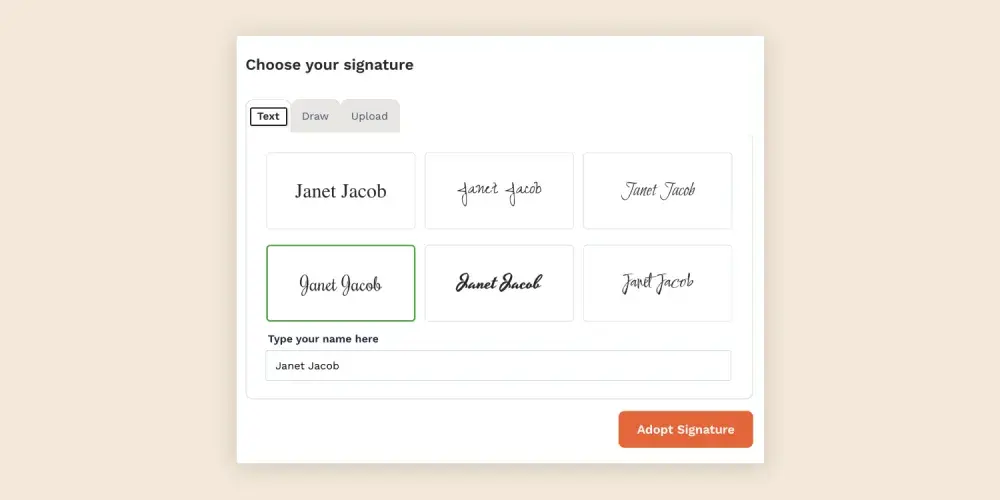
Use the Draw style to re-create your signature using:
Here's an electronic signature sample created with the Draw option.
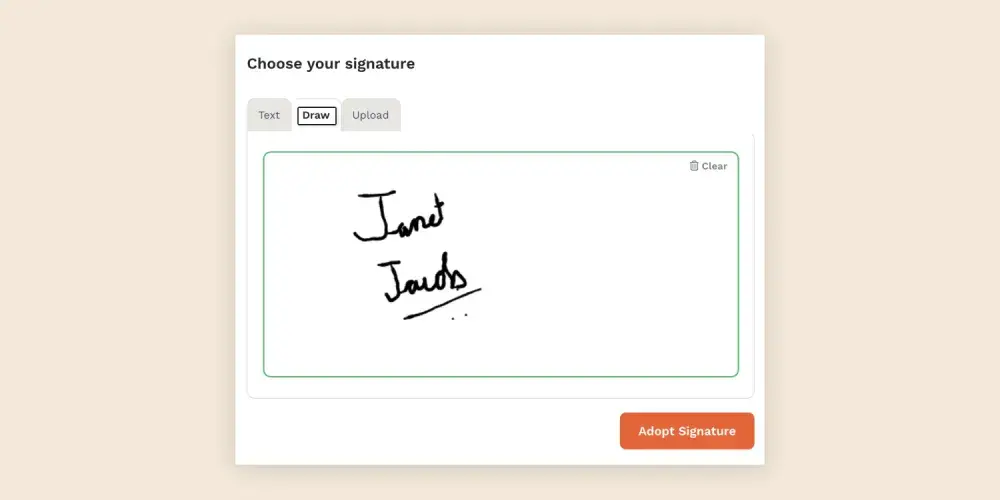
With the Upload option, you can use your "handwritten or wet" signature to sign documents. For that, you need to sign on a piece of paper, scan it, or take a photo using a mobile, and save it as a .jpeg or .png file. Next, upload the saved image of your wet signature.
The below image shows how you can upload your wet signatures.
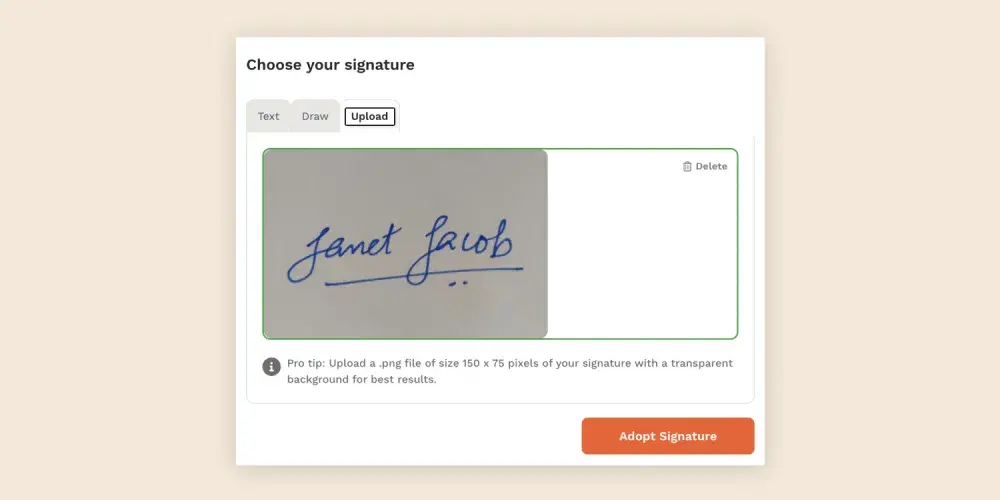
Once you choose the preferred signature style, click on the Adopt Signature button, and your e-signature will be automatically placed inside the signature box.
The below image shows how a signed document will look like with your e-signature.
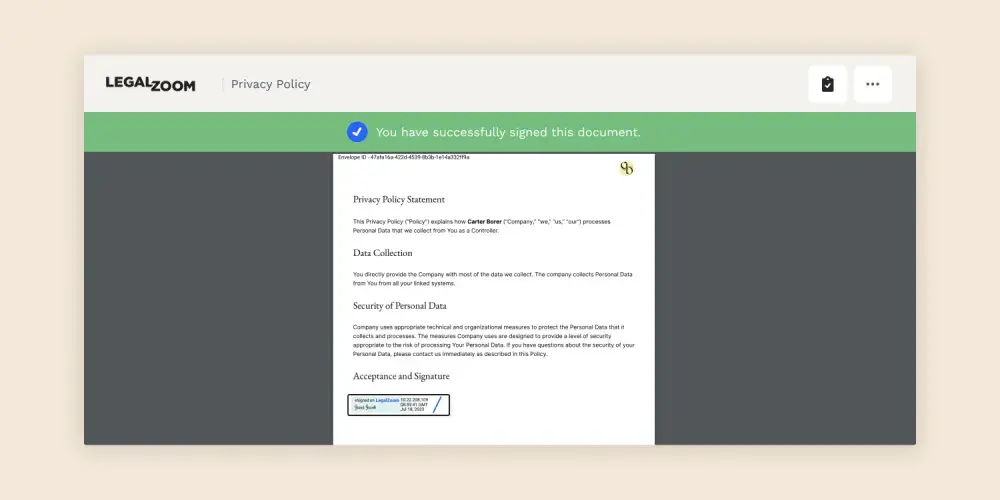
With LegalZoom's eSignature service, the process of creating electronic signatures becomes seamless and efficient. Our platform not only provides a variety of options for creating electronic signatures, but it also ensures that the entire signing process is secure and legally valid. Our eSignature service has been designed to comply with U.S. electronic records and signature laws. Additionally, every document signed using our service generates an eSignature Evidence Summary, serving as a useful audit trail. Through our real-time email notification system, both senders and signers can track documents sent for eSignature, eliminating any confusion or delays.
An example of an electronic signature is when you digitally sign a document by typing your name in a designated signature field. Another example of an electronic signature is a scanned image of your handwritten signature that you insert into a document. A typed name at the end of an email can also be considered an electronic signature.
To create an electronic signature, you can use a variety of methods, such as signing with a stylus or finger on a touchscreen device, using a signature pad, or even signing on paper and scanning it to create a digital copy. You can also choose from various software applications and online platforms that allow you to create and insert an electronic signature into documents. For instance, LegalZoom's eSignature service allows you to type, draw, or upload your signature and add it to a document.
To write your name in an electronic signature, you can use a stylus or your finger on a touch screen, a mouse or touchpad on a computer, or use an e-signature service, which further allows you to select from a variety of pre-designed signature styles.
In the European Union, the law governing the use of electronic signatures is defined by the eIDAS (Electronic Identification, Authentication, and Trust Services) regulation. As per eIDAS Regulation, there are three types of electronic signatures.
Simple electronic signature (SES): This is the most basic type of electronic signature. It can be as simple as typing your name or clicking a button that says "I Agree." It doesn't require any special verification or proof of identity for the signer.
Advanced electronic signature (AES): An advanced electronic signature is more secure than a simple electronic signature. This type of signature uses a digital certificate to verify the identity of the signer, ensuring that the signature is authentic and cannot be forged.
Qualified electronic signature (QES): A qualified electronic signature is the most secure type of electronic signature. It is created using a digital certificate issued by a Qualified Trust Service Provider (QTSP). The QTSP is authorized by the government to provide digital certificates and is responsible for verifying the identity of the signer.
A digital signature is a type of electronic signature that uses cryptographic techniques to verify the authenticity and integrity of a digital document or message. It involves the use of a public key infrastructure (PKI), which contains a pair of keys: a private key kept by the signer and a corresponding public key made available to others. The signer applies their private key to digitally sign the document, creating a unique digital fingerprint that can be verified using the provided public key. The PKI provides a secure framework for verifying the identity of the signer, preventing tampering with the document, and enabling trust in business transactions.
Get documents signed onlineThis article is for informational purposes. This content is not legal advice, it is the expression of the author and has not been evaluated by LegalZoom for accuracy or changes in the law.
You may also like
2024 is one of the best years ever to start an LLC, and you can create yours in only a few steps.
July 29, 2024 · 22min read
'Inc.' in a company name means the business is incorporated, but what does that entail, exactly? Here's everything you need to know about incorporating your business.
October 9, 2023 · 10min read
Writing a will is one of the most important things you can do for yourself and for your loved ones, and it can be done in just minutes. Are you ready to get started?
July 21, 2024 · 11min read